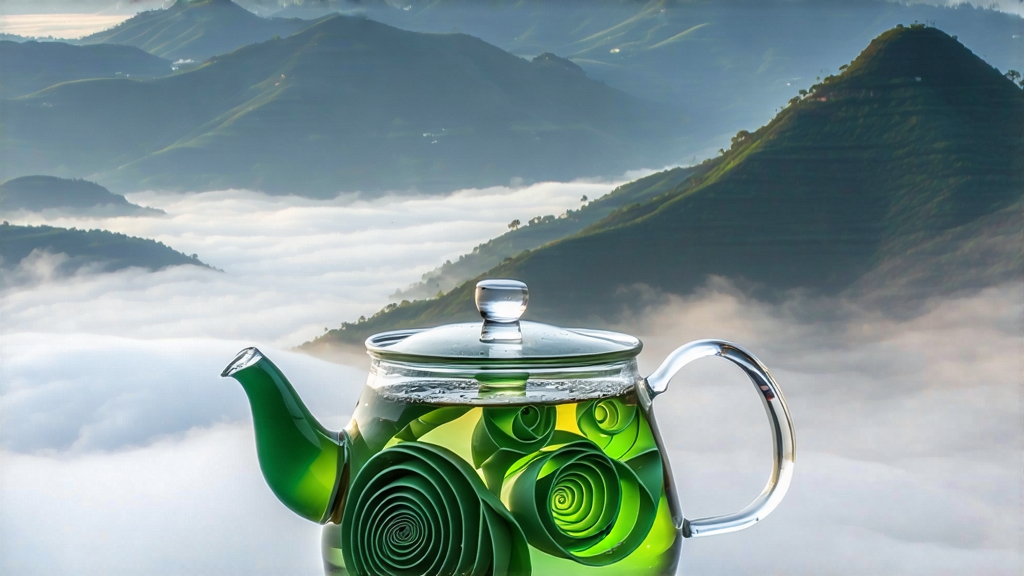
Tucked between the mist-laden peaks of Dongting Mountain in Jiangsu Province and the vast, wave-washed Taihu Lake lies the birthplace of one of China’s most celebrated green teas—Biluochun. Its name, literally “Green Snail Spring,” is a poetic compression of place and form: the leaf is the color of fresh jade, the shape of a tiny spiral shell, and the picking season is the brief, fragrant window when spring is still a whisper. To international drinkers who have met only flat dragon-well leaves or needle-shaped sencha, Biluochun offers a surprise both visual and sensory—an emerald curl that unfurls in hot water to release an aroma Chinese poets once described as “the scent of a fruit orchard after rain.”
Historical records first mention the tea during the late Tang dynasty (ninth century), but its modern reputation was sealed in the Qing imperial court. Legend says the Kangxi Emperor, touring the lake region in 1699, was presented with a small jar of local tea so aromatic that he asked its name. Told it was vulgarly called “Xia Sha Ren Xiang” (“scary fragrance”), the scholar-emperor renamed it on the spot, noting its spiral shape and early-spring harvest. From that moment, Biluochun entered the gongting (tribute) roster, traveling northward on canal boats locked in ice chests of fresh lake water so that the Forbidden City could taste spring before the willows budded in Beijing.
Today, the tea is still produced only in a micro-zone of roughly 1,800 hectares on Dongting’s east and west peaks. Unlike many famous Chinese teas whose appellations have sprawled across entire counties, Biluochun’s core origin is so small that locals joke a good harvest could be carried out in two wicker baskets—if those baskets were woven by giants. Within this zone, two traditional cultivars dominate: “Xiao Ye” (small leaf) and the even more delicate “Xiao Ye Tiao Zhong,” a landrace selected over centuries for its tiny, high-aroma buds. Both cultivars sit at the northern edge of China’s tea-friendly latitude, meaning the plants endure cool nights even in April, slowing growth and concentrating amino acids that translate into sweetness and umami.
The crafting of Biluochun is a race against dawn. Picking begins around 4:30 a.m., when mountain mist is still thick enough to bead on bamboo baskets. Only the standard “one bud with one unfolding leaf” is taken; anything larger is set aside for lower grades. By 8 a.m., the baskets must reach the village workshop, because enzymatic oxidation waits for no poet. The first step is gentle withering—leaves are spread on bamboo trays for no more than thirty minutes, just long enough for field heat to dissipate. Next comes the kill-green phase, performed on iron woks heated to 180 °C. A master tea maker tosses 250 grams of leaves at a time, using only the fingertips to avoid crushing the bud. The motion is a rapid figure-eight: up, across, down, repeat. Within three minutes the leaf temperature reaches 85 °C, deactivating polyphenol oxidase while preserving the bright chlorophyll that gives the tea its signature color.
What follows is the most iconic step—spiral shaping. Wok temperature is lowered to 70 °C, and the maker begins a choreographed press-and-rub sequence. Palm meets leaf, fingers curl, wrist rotates; the bud is coaxed into a tight spiral without ever being crushed. The motion resembles kneading dumpling dough, yet the pressure is calibrated to the gram: too light and the curl will not hold, too heavy and the leaf tip breaks, releasing bitterness. After fifteen minutes, the tea is passed to a low-temperature wok (50 °C) for the final drying. Here, the maker’s fingernails become thermometers: when a leaf feels cool against the cuticle, it is done. The entire process, from plucking to finished tea, spans less than four hours—an artisanal sprint that explains why authentic Biluochun costs more than silver by weight.
Grading is done by eye and nose, not machine. Top-grade “Special One” consists of uniform spirals 1.5 cm long, downy with white tips, yielding a dry aroma of apricot and toasted pine nut. Grade Two shows slightly